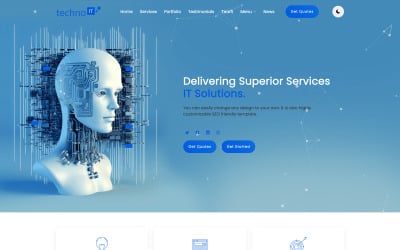Reasonably-Priced and Skilled Website Design for Small Business Owners
Reasonably-Priced and Skilled Website Design for Small Business Owners
Blog Article
Leading Tips for Developing an Impactful Site Design That Converts
In today's electronic landscape, the importance of an impactful site design can not be overstated, particularly when it involves transforming site visitors right into customers. To attain this, one should think about a range of elements, consisting of comprehending the target market, focusing on customer experience, and optimizing for mobile systems. The tactical usage of engaging call-to-actions and a well-defined aesthetic power structure plays a vital role in leading users through their trip. As we explore these crucial elements, it ends up being obvious that the success of your web site rests on more than just appearance; it requires a thoughtful method to design and performance.

Understand Your Target Target Market
Recognizing your target market is fundamental to efficient internet site layout, as it lays the groundwork for producing an appealing individual experience. Recognizing who your individuals are, including their demographics, preferences, and behaviors, enables developers to customize the website's content, design, and performance to meet details needs.
Performing thorough marketing research is vital in this process. Surveys, interviews, and analytics can provide useful understandings right into customer assumptions and pain points. By assembling this information, designers can create individual personalities that represent various sectors of the target market, ensuring that layout decisions are informed and pertinent.
Moreover, understanding the target market helps in picking ideal design aspects such as color pattern, typography, and images that resonate with individuals. A web site that talks straight to its audience promotes a feeling of connection and depend on, urging longer sees and higher conversion prices.
Ultimately, a user-centered approach to internet site layout not just boosts user satisfaction however also supports company purposes by driving involvement and loyalty. By focusing on the requirements and choices of the target market, an internet site can effectively offer its purpose and attain preferred end results.
Prioritize Individual Experience
To improve the general efficiency of a website, prioritizing customer experience (UX) is necessary (Website Design). A well-designed UX makes sure that visitors can navigate the site effortlessly, discover information promptly, and engage with material meaningfully. This results in increased individual complete satisfaction and greater conversion rates
Begin by implementing instinctive navigating. Menus should be rationally structured, permitting users to locate vital locations of the site with very little effort. Consistency in layout components, such as color design and typefaces, fosters familiarity, which is essential for preserving customer interaction.
In addition, take into consideration the packing rate of your site. A delay of simply a couple of seconds can cause substantial drop-offs, as customers are much less likely to wait on a slow-loading web page. Streamlining images and enhancing code can enhance efficiency and keep visitors.
In addition, clarity in material presentation is important. Use succinct, engaging language and separate message with visuals to enhance readability. By prioritizing customer experience, you not only produce an extra satisfying atmosphere for site visitors yet likewise enhance your brand's credibility. Eventually, an emphasis on UX is an investment in the lasting success of your website.
Enhance for Mobile Tools
Optimizing for mobile phones is crucial in today's electronic landscape, where a raising number of individuals gain access to internet sites via smartphones and tablets. A mobile-friendly style not only improves user experience however likewise plays a significant role in improving online search look at more info engine rankings. To accomplish this, it is vital to take on a receptive design that automatically gets used to different display dimensions and orientations.

Filling speed is one more vital aspect; mobile customers are generally less person and expect fast accessibility to info. By prioritizing mobile optimization, you guarantee that your website remains affordable and properly involves a wider target market.
Use Compelling Call-to-Actions
A site's performance usually rests on its ability to lead site visitors towards wanted activities, making engaging call-to-actions (CTAs) essential elements of design. CTAs serve as the essential points that direct individuals to involve with the website, whether that implies making a purchase, enrolling in an e-newsletter, or downloading a source.
To produce efficient CTAs, quality is critical. Use succinct language that plainly connects the action you desire the customer to take.
Additionally, take into consideration utilizing directional hints, such as arrowheads or pictures, to guide individuals towards these switches. By focusing on these aspects, companies can dramatically boost user interaction, driving conversions and eventually accomplishing their web site's objectives.
Emphasis on Visual Hierarchy
Reliable website design depends heavily on a well-structured aesthetic pecking order that overviews individuals with content seamlessly. By arranging aspects in a fashion that focuses on information, developers can enhance individual experience and facilitate decision-making. This involves utilizing size, color, comparison, and spacing strategically to attract interest to one of the most crucial parts of a website.
The usage of larger font styles for headings and subheadings establishes a clear distinction between various areas, enabling individuals to check content effortlessly. Furthermore, using contrasting shades for switches and calls-to-action can capture customer focus and motivate interaction. Whitespace is another important element; it avoids mess and enables customers to concentrate on crucial messages without visit homepage distractions.
Pictures and graphics must complement the text while additionally adhering to the well-known hierarchy, strengthening the total message (Website Design). Uniformity in style elements, such as color design and typography, more strengthens the aesthetic power structure, making navigation user-friendly

Verdict
In conclusion, efficient internet site layout requires an extensive understanding of the target audience, prioritization of customer experience, and mobile optimization. The calculated use compelling call-to-actions and a well-defined visual power structure better improves user involvement. By implementing these concepts, web sites can accomplish higher conversion rates, guaranteeing that design elements not just bring in site visitors however also facilitate smooth navigating and communication. Eventually, a well-executed site layout acts as an essential component in driving customer activities and achieving company objectives.
Report this page